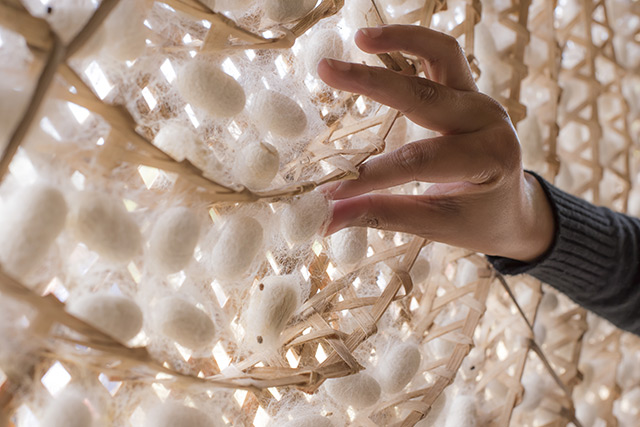
Touted to be all-natural by its creators, the new biomaterial offers an alternative way to sterilize pathogens.
Standard photocatalytic means require semiconductor materials that can be toxic to humans and animals. These established methods are also dependent on cancer-causing ultraviolet light for activation.
Researchers from the Purdue University and the National Institute of Agricultural Research (NAAS) of Korea engineered an organic alternative. Instead of semiconductors and UV light, they used the interactions between light-reactive biomaterials and visible light.
According to them, the silk hybrid could see use in wound treatment, air purification, and water treatment.
They published their findings in the journal Advanced Science. Their paper is titled "Green-light-activated photoreaction via genetic hybridization of far-red fluorescent protein and silk." (Related: Biotech industry trying to eliminate all FDA regulation of genetically edited ranch animals by shifting authority to the USDA, which has totally sold out to Monsanto.)
When exposed to green light, fluorescent protein in silk hybrid releases bacteria-killing molecules
Young Kim, an associate professor of biomedical engineering at Purdue, said that silk is one of the oldest and best-understood biomaterials. Harvested from the cocoons of silkworms, the material generally does not cause any ill effects in humans aside from the rare allergy.
Likewise, green light is not dangerous like ultraviolet light. Green is the strongest wavelength of the visible spectrum, but it's still safe for humans since it's found in natural sunlight.
To create a material that featured the benefits of these two, the Purdue-NAAS research team fused the "mKate2" gene into a silk host. A fluorescent protein in the far-red spectrum, mKate2 creates reactive oxygen species (ROS) in the presence of green light.
ROS are radical molecules that react to any organic contaminants they encounter. They attack the membrane and genetic information of bacteria and other pathogens.
The researchers tested the new silk using E. coli bacteria. When they shone a weak green light on the light-reactive biomaterial, they determined that the survival rate of bacteria on the silk hybrid plummeted to 45 percent.
In addition, the new material appeared to be very versatile. The hybrid silk could be turned into a bandage, fabric, film, and solution.
Fluorescent silk is eco-friendly and bio-compatible with humans
Kim's fellow researcher Jung Woo Leem explained that they made fluorescent silk so that it could be disinfected or decontaminated with just normal light instead of UV light. Kim added that their team's product is superior to competing plasmonic photocatalysts in terms of efficiency and ability to be scaled up.
Plasmonic photocatalysts use metal nanoparticles from semiconductor materials. While these nanoparticles can react with normal light, they may have hazardous effects on the environment, humans, and animals.
Kim pointed out that silkworms create the host material for the ROS-generating proteins of their fluorescent biomaterials. The manufacturing process of their silk photocatalysts is very easy and environment-friendly compared to industrial processes that create plasmonic photocatalysts.
He and his team are already considering other uses for the hybrid silk. Kim talked about implantable and injectable bandages that will not be rejected by the human body and will naturally break down after the wound has healed up.
The hybrid silk was genetically engineered to accommodate the fluorescent protein, but it is an organic product and technically not a GMO. The silkworms that produced it are normal; the protein is added to the silk after harvesting.
Learn more about how biotechnology creates bacteria-killing silk and other genetically engineered products at Biotech.news.
Sources include:
Please contact us for more information.























